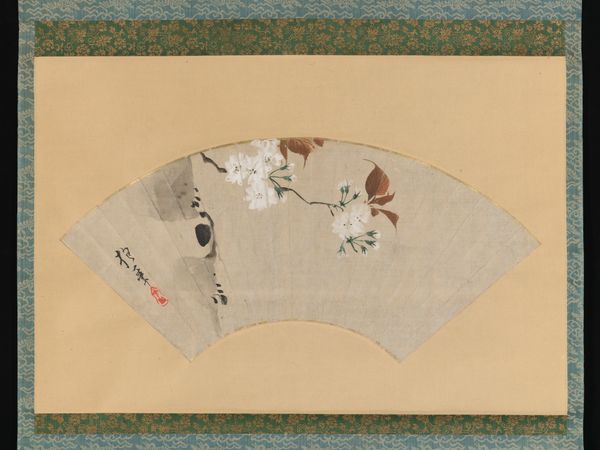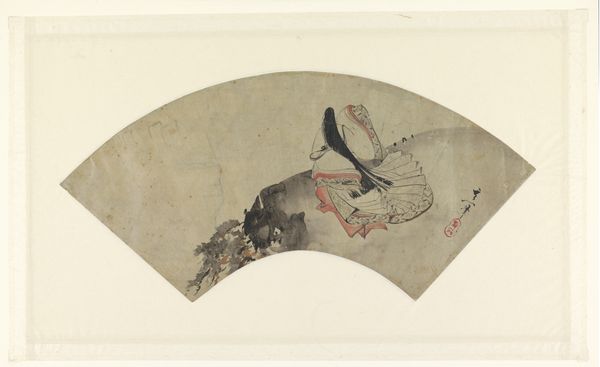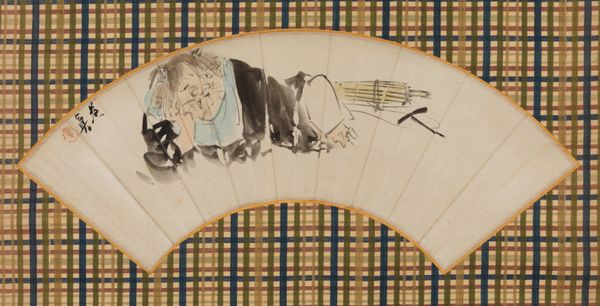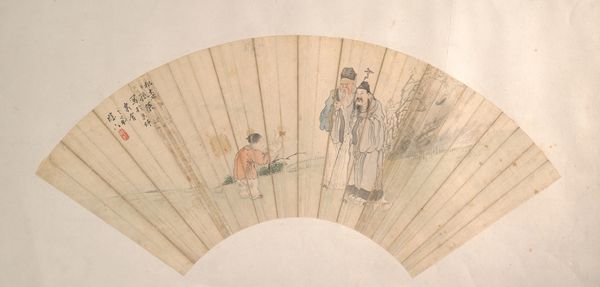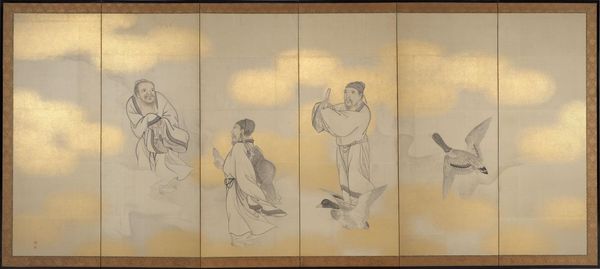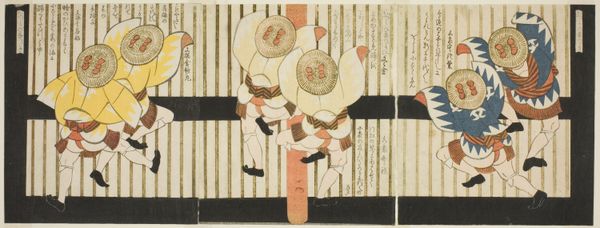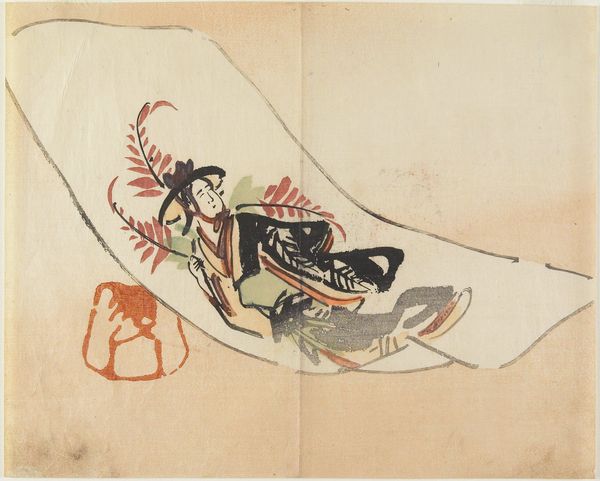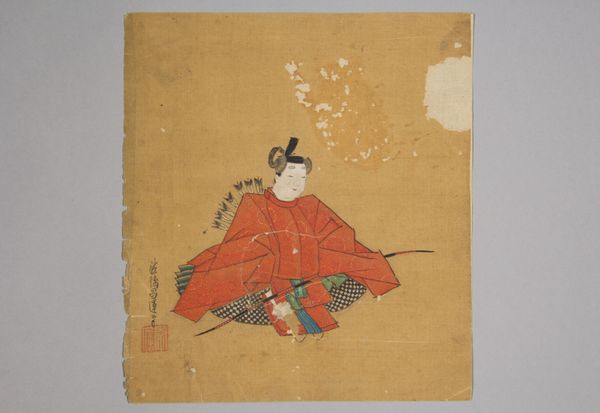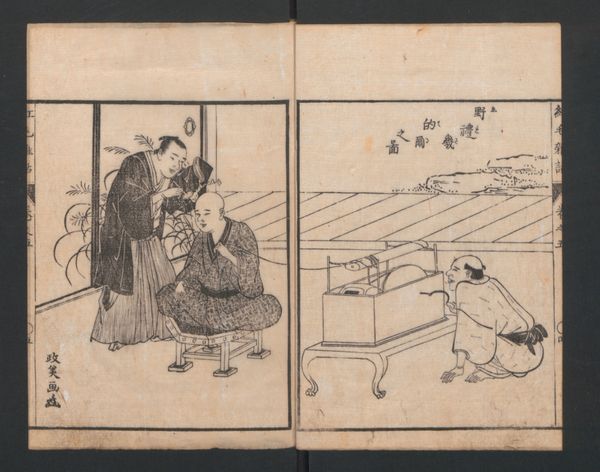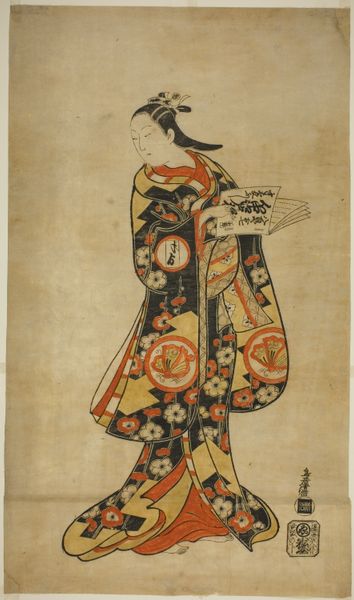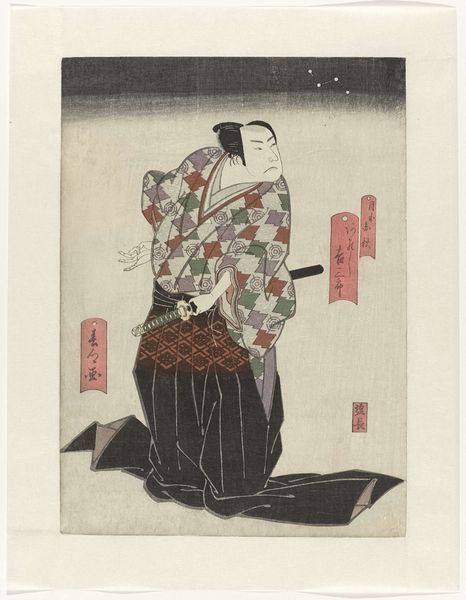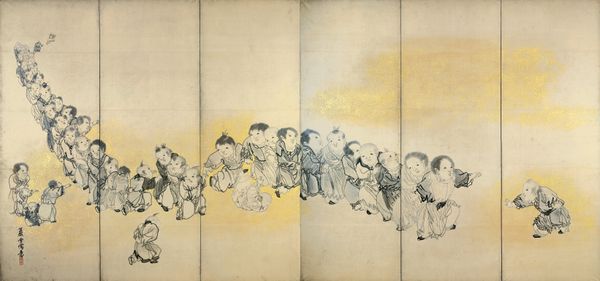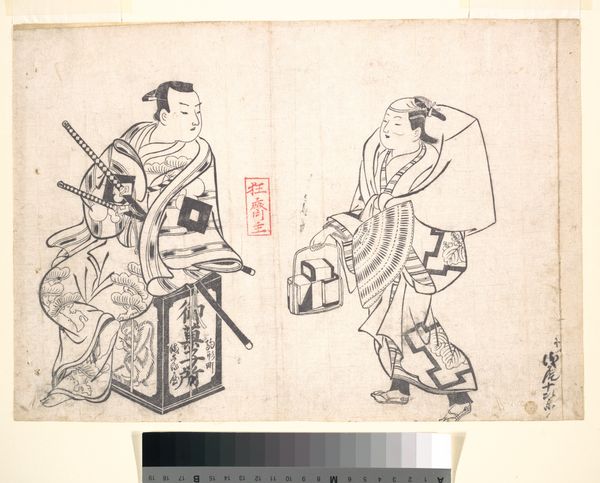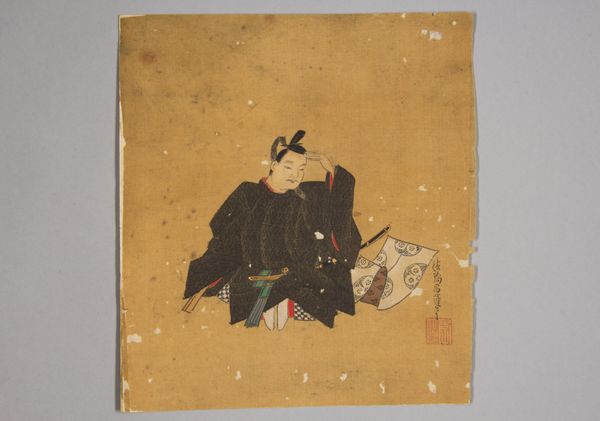
Dimensions: height 247 mm, width 358 mm
Copyright: Rijks Museum: Open Domain
Curator: What strikes me immediately about this watercolor is the somewhat subdued color palette for caricatures—there's a quietness to these men. Editor: I agree, and that subtle tonality likely has much to do with Fujikawa Tamenobu's artistic training and preferred materials, his use of thin washes really softening the portrayal. Curator: Indeed. We're looking at “Portretten van Kitahachi en Yajirobe,” portraits, dated between 1912 and 1916. Though on the surface they may simply appear to be portraits, one can clearly discern Fujikawa Tamenobu's hand through the lens of ukiyo-e caricature. Consider their headwear, and how the insignias are stylized. There is much symbolism embedded here. Editor: Those hats! Made of lightweight straw perhaps, the insignias seemingly woven in or painted on. It draws the eye upwards immediately. There is something very tactile here, contrasting against the smooth watercolor application on their faces. Curator: The contrasting dark oval backgrounds isolates the subjects. It feels like the artist invites us to understand their characters more deeply. I find a stoicism within both men. The portrait on the left almost exudes confidence. Editor: But consider the materials available to Tamenobu at that time; such papers and pigments, though readily available, often relied on intense labor to produce. Even his choice of watercolor is quite interesting in its accessibility, yet it yields such detail here. What does that choice, in that time, suggest? Curator: Good point. In Ukiyo-e, comedy often provides social commentary; are we, through these characterizations, meant to reflect on something larger than their portraits suggest? Their features are exaggerated—almost playful, but with a touch of pathos that hints at life’s struggles. It's also interesting that even within the ukiyo-e tradition, caricature served the same role it always has in art—as a means for the maker to use symbolic references in the figures and cultural shorthand to expose truths about the subjects. Editor: Indeed. These portraits encapsulate an intriguing blend of craftsmanship, material consideration, and profound symbolic representation. Curator: These small differences expose an intricate tapestry of Japanese cultural representation within the early 20th century. Editor: An insightful and engaging work; a confluence of artistry and the materiality of production!
Comments
No comments
Be the first to comment and join the conversation on the ultimate creative platform.
